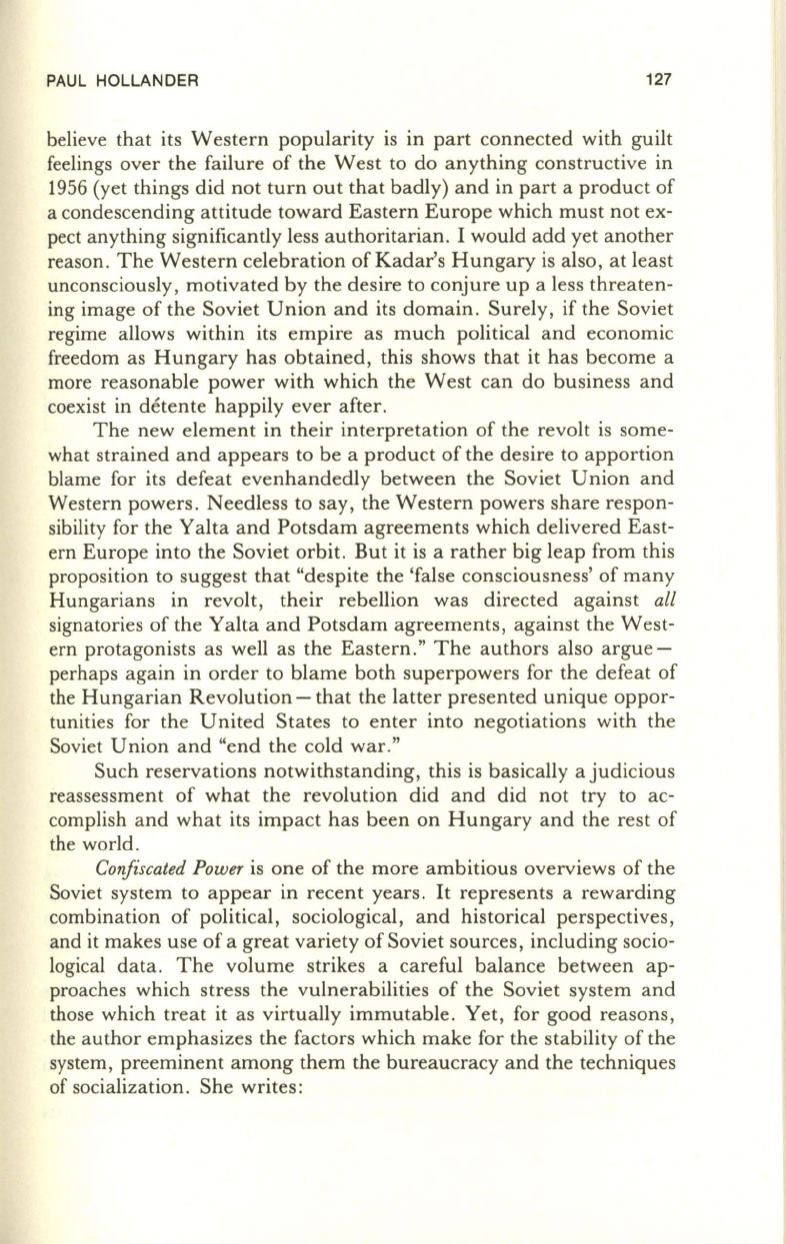
PAUL HOLLANDER
127
believe that its Western popularity is in part connected with guilt
feelings over the failure of the West to do anything constructive in
1956 (yet things did not turn out that badly) and in part a product of
a condescending attitude toward Eastern Europe which must not ex–
pect anything significantly less authoritarian. I would add yet another
reason. The Western celebration of Kadar's Hungary is also, at least
unconsciously, motivated by the desire to conjure up a less threaten–
ing image of the Soviet Union and its domain. Surely, if the Soviet
regime allows within its empire as much political and economic
freedom as Hungary has obtained, this shows that it has become a
more reasonable power with which the West can do business and
coexist in detente happily ever after.
The new element in their interpretation of the revolt is some–
what strained and appears to be a product of the desire to apportion
blame for its defeat evenhandedly between the Soviet Union and
Western powers. Needless to say, the Western powers share respon–
sibility for the Yalta and Potsdam agreements which delivered East–
ern Europe into the Soviet orbit. But it is a rather big leap from this
proposition to suggest that "despite the 'false consciousness' of many
Hungarians in revolt, their rebellion was directed against
all
signatories of the Yalta and Potsdam agreements, against the West–
ern protagonists as well as the Eastern." The authors also argue–
perhaps again in order to blame both superpowers for the defeat of
the Hungarian Revolution - that the latter presented unique oppor–
tunities for the United States to enter into negotiations with the
Soviet Union and "end the cold war."
Such reservations notwithstanding, this is basically a judicious
reassessment of what the revolution did and did not try to ac–
complish and what its impact has been on Hungary and the rest of
the world.
Confiscated Power
is one of the more ambitious overviews of the
Soviet system to appear in recent years. It represents a rewarding
combination of political, sociological, and historical perspectives,
and it makes use of a great variety of Soviet sources, including socio–
logical data. The volume strikes a careful balance between ap–
proaches which stress the vulnerabilities of the Soviet system and
those which treat it as virtually immutable. Yet, for good reasons,
the author emphasizes the factors which make for the stability of the
system, preeminent among them the bureaucracy and the techniques
of socialization. She writes:


